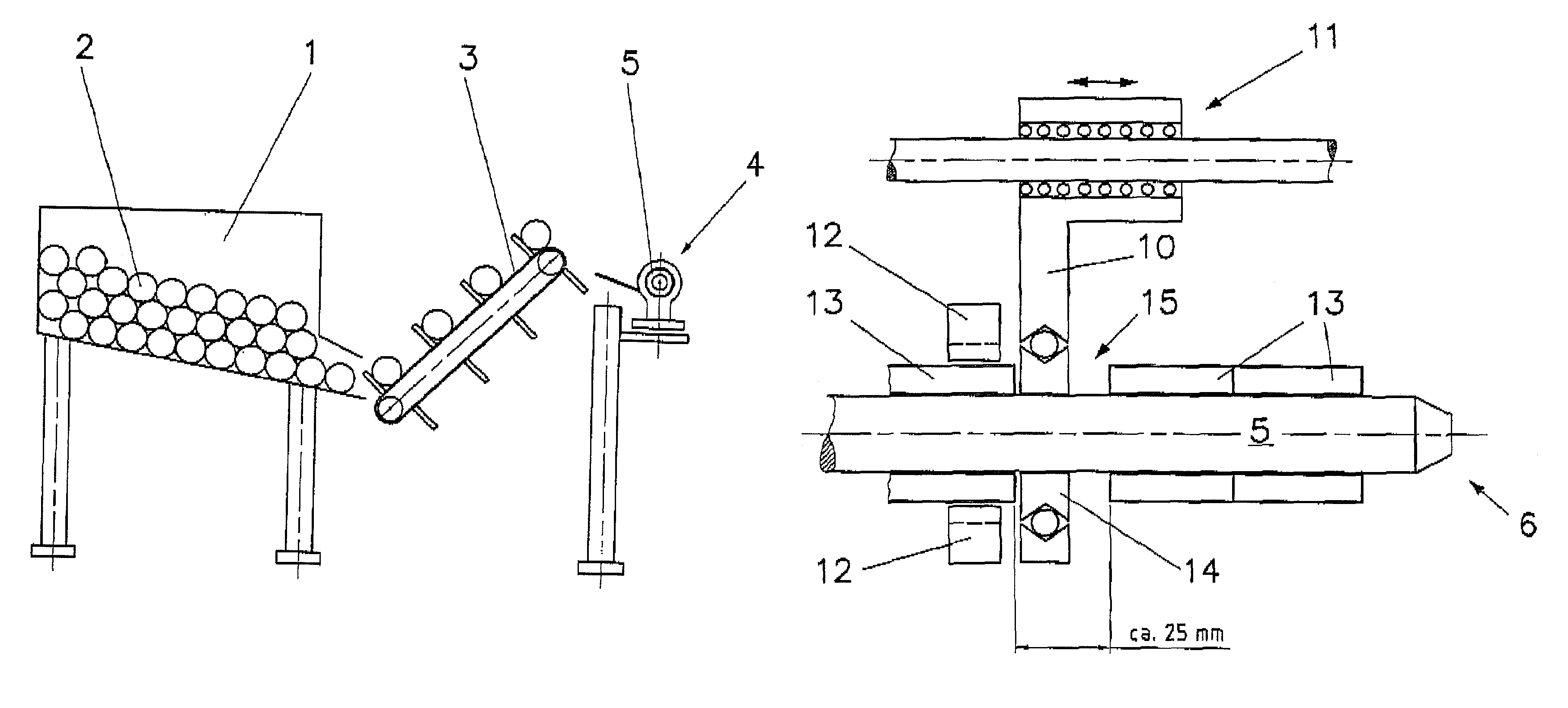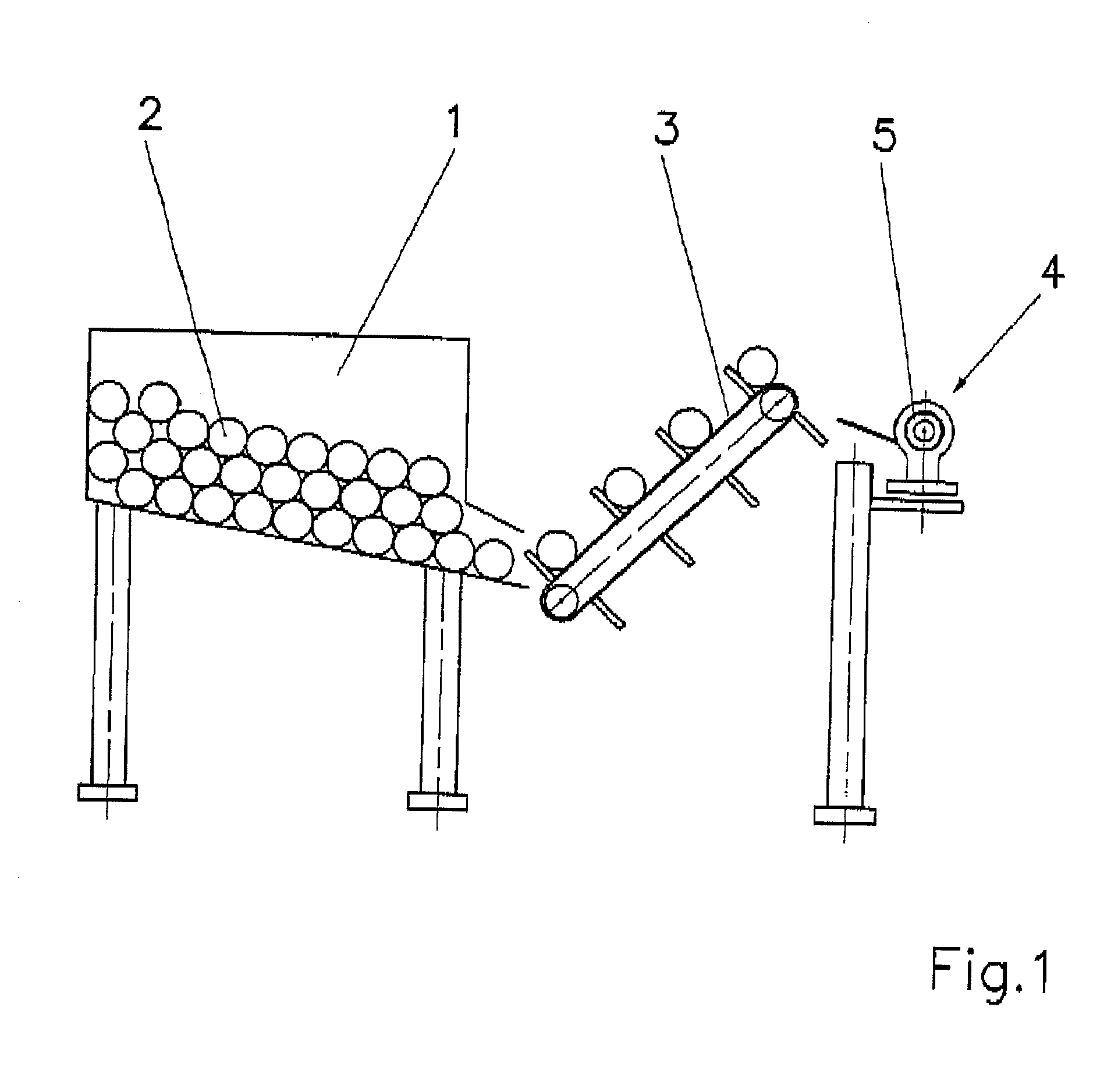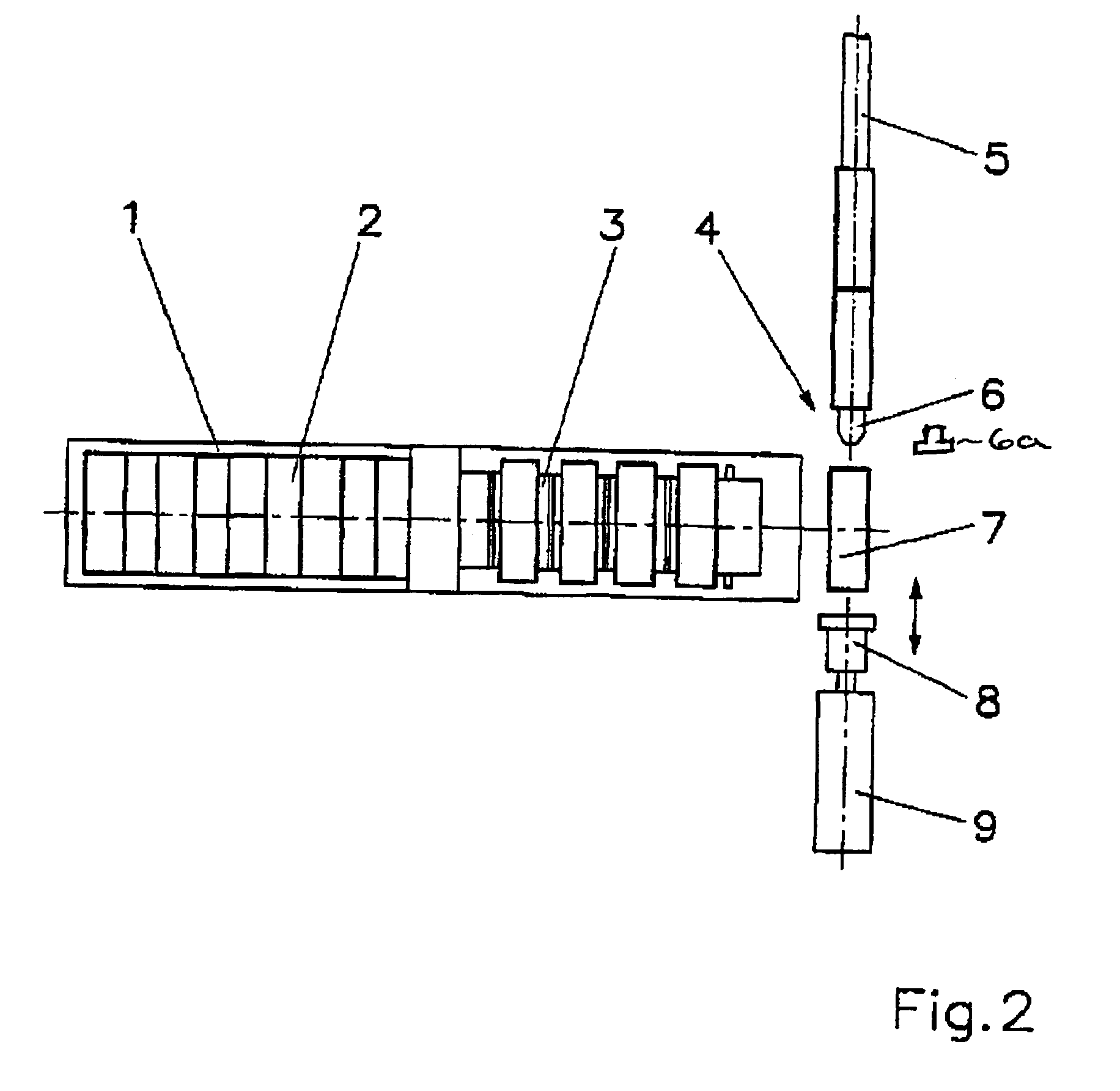Automated sleeve filling for winding shafts on roll slitting and winding machines
a technology of winding shaft and winding machine, which is applied in the direction of web handling, filament handling, function indicators, etc., can solve the problems of uneconomical operating modes and the difficulty of manually moving the winding shaft o
- Summary
- Abstract
- Description
- Claims
- Application Information
AI Technical Summary
Benefits of technology
Problems solved by technology
Method used
Image
Examples
Embodiment Construction
[0020]In a storage container 1, for example a magazine 1, large numbers of empty winding sleeves 2 are stacked such that the axes of rotation are parallel to the winding shaft 5. An endless conveyer belt 3, equipped with webs fastened transverse to its belt travel direction, successively grasps winding sleeves 2 from the magazine 1 and brings them into coaxial position toward the respective winding shaft 5. In this process the winding shaft 5 is floating at its free end 6, i.e., without support there, as is shown in FIG. 1.
[0021]FIG. 2 shows a top view of the magazine 1, the conveyer belt 3, a winding shaft 5 and a sliding device 8 with a pneumatic cylinder 9. The empty winding sleeve 7 provided for filling-on is now directly adjacent to the free end of the winding shaft 5 in a coaxial position. It is noted that before the winding shaft 5 is filled with empty sleeves, a support bearing 6a is removed from the winding shaft 5 and the support bearing is returned to the winding shaft 5 ...
PUM
| Property | Measurement | Unit |
|---|---|---|
| width | aaaaa | aaaaa |
| length | aaaaa | aaaaa |
| diameter | aaaaa | aaaaa |
Abstract
Description
Claims
Application Information
 Login to View More
Login to View More - R&D
- Intellectual Property
- Life Sciences
- Materials
- Tech Scout
- Unparalleled Data Quality
- Higher Quality Content
- 60% Fewer Hallucinations
Browse by: Latest US Patents, China's latest patents, Technical Efficacy Thesaurus, Application Domain, Technology Topic, Popular Technical Reports.
© 2025 PatSnap. All rights reserved.Legal|Privacy policy|Modern Slavery Act Transparency Statement|Sitemap|About US| Contact US: help@patsnap.com



